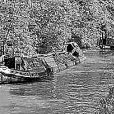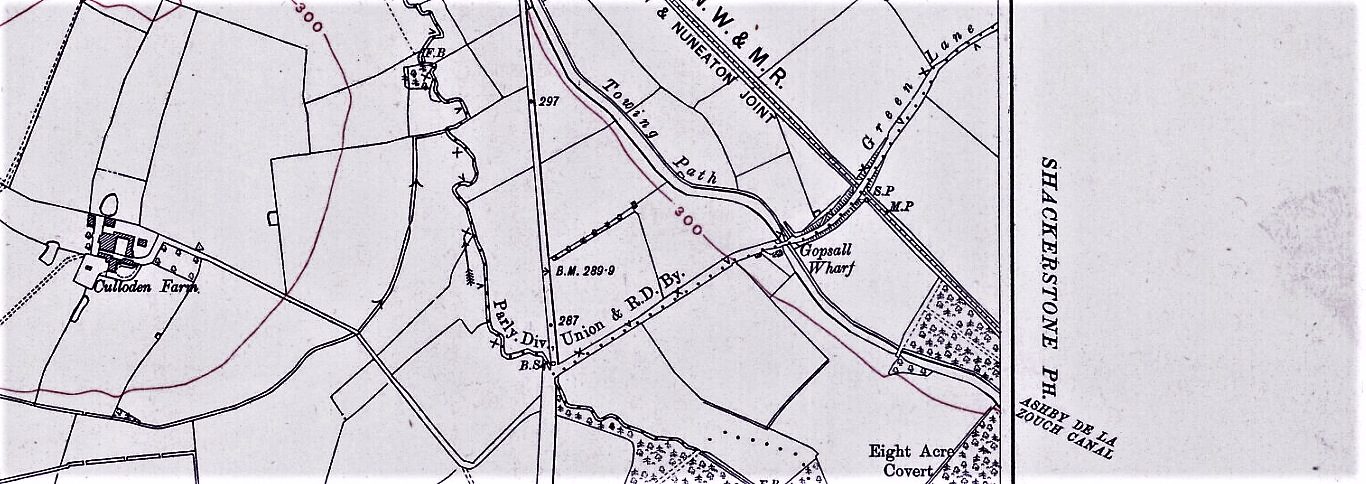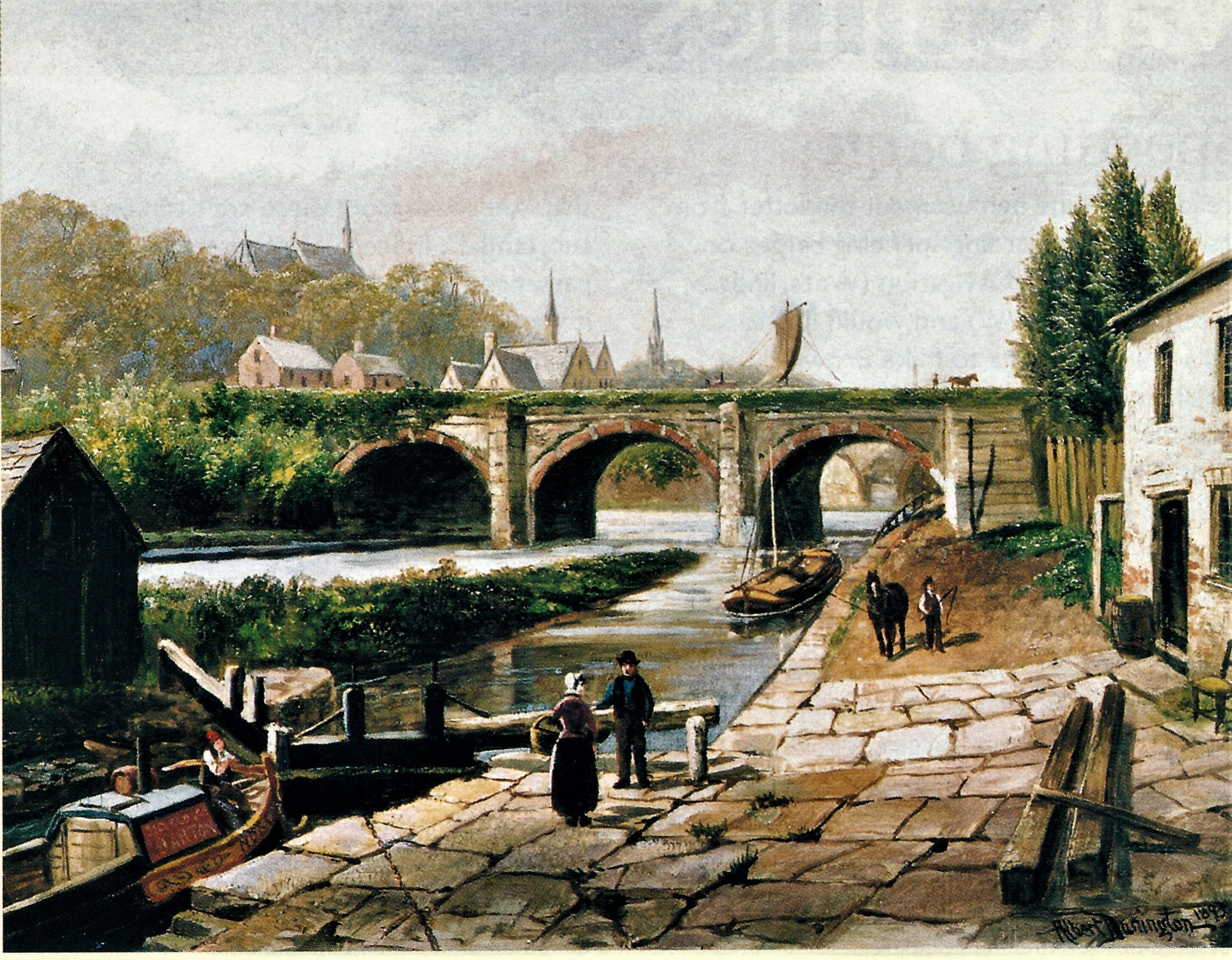-
Posts
3,397 -
Joined
-
Last visited
Content Type
Profiles
Forums
Events
Gallery
Blogs
Store
Everything posted by Heartland
-
Whilst the concept raising and lowering boats vertically in a caisson was suggested during the early days of the canal era, suggestions and patent applications did not necessarily lead to a full size working example. Early known working boat lifts include examples on the Ellesmere Canal and the Dorset & Somerset Canal, with the Ellesmere Canal patent machine being apparently the first. The location for Fussel's lift on the D & S is well established, but that of the Ellesmere (Rowland & Pickering) remains to be proved with two possible locations suggested near Ruabon. Establishing the location of this boat lift can only be of benefit to the World Heritage Site at Pontcysyllte.
-

Middlewich Branch breach - Shropshire Union
Heartland replied to lostnortherner's topic in General Boating
The Middlewich Branch breach is on the Telford engineered waterway that linked the T & M Wardle branch with the main Ellesmere & Chester Canal. Telford had problems with the nature Cheshire Marl when building this canal. This marl proved an unsuitable foundation when making embankments. When exposed to air it liquified and ran away. The embankments were built wider in consequence. Substantial engineering were required at the valley crossings and some six years were needed to complete this waterway. Historians have often commented on the engineering issues had on building the Birmingham & Liverpool Junction Canal, yet similar challenges were met on the Middlewich Branch. Though for the Middlewich Telford was alive to witness the opening of that waterway! -
Terry Fogarty died on February 10th 2018. He spent many years and much money promoting his concept of the diagonal lock. During his last years Terry had sold his house and was living on a boat at Knowle. The diagonal lock concept must rank amongst the innovative canal schemes of British Canal engineering. Although no such lock has been built, there remains the potential in the future to use such ideas in new canal ventures. It is perhaps sad that he spent so much effort to bring his concept to fruition and during his lifetime failed to achieve even a full scale prototype.
-
This was the South Midlands area of the National Coal Board, then. Rawdon was near Moira, and there were, as said others including Ellistown. To load at Gopsall however required a road carriage element. Sections of the Ashby Canal had been closed in 1944 and 1957 leaving carriage by road from the main operating collieries to a canal wharf an option.
-
Pluto has listed early narrow boats on the Calder and Hebble. The Buckingham boats are of interest the craft owned by Southam as their journey would have been through Manchester and the Ashton. Length would also have been a factor getting through the Huddersfield Broad Certain carriers did advertise a service to Huddersfield, but the journey to the C & H must have been a more specific cargo
-
It is Gopsall Wharf, I believe I attach copy of 1924 ordnance survey. On a related topic, where did the coal come from?
-
The Island Toll Houses are a feature of the BCN New Main Line, but the various toll house design varied with time. Most toll houses were on the bank, but the space restrictions on the main line led to the this innovation of placing them on the canal rather than the bank.
-
With the implementation of a licence, it will be a start of a process that will entail an issue system, fees and regulations. The revenue accrued may lead to improved facilities for boaters. If this is the case, will the negatives be offset by the positives, or is the current revenue from drainage enough to make such improvements? Free navigations have been an established right on several British Waterways. These benefits have their good and bad sides, though. The cost of improvement being a major factor. Whether this is a genuine concern for Middle Level remains to be seen. For the Severn, for example, north of Stourport, the nominally free navigation may well benefit from a cash investment to allow craft to travel further north. Do the Middle Level Commissioners intend improvement or is simply a means of raising cash for additional profit ?
-
Yes, Heard from one source, Titford, but looking at a BCNS Post, it is Blowers Green. The same comments apply, what will happen if a developer moves in and more importantly how much more does CRT intend to dispose of?
-
A notice at Titford Pump House evidently announces the CRT intention to dispose of the freehold of the pump house. If this freehold passes into the ownership of a developer, concern must be felt for the current moorings there.
-
When does Snoopy have his rematch with the Red Baron
-
The only connection, for MMM, is the name Malthouse Stables, whether MMM is Malthouse Motorboat Moorings is a close guess, it all I can think of at the moment. The moorings were set up around that date, I recall.
-
Paying to use canals... British Transport Waterways was keen to have boaters business at a time when freight was in decline. Yet boaters did not have the freedom to cruise wherever they wished. That facility, now enjoyed across the CRT network, was not then available!
-
The ones I saw were definitely yours, and also recall the one you have posted. As a canal historian I look at art from time to time. There are many occasions where colour is of use to a historian, when there is an apparent reasonable accuracy in the painting or watercolour. What you do is create a fine atmosphere of a period now gone and people appreciate the balance that is created. It is nice to see how it is done. A because it is art and not a photographic representation, that makes the process worthwhile. As to accuracy there are times when it does help research. Albert Dunnington produced a fine painting of Barton Lock and Aqueduct in 1893 before they were swept away. There is certain amount of artistic interpretation, such as the vessel under sail when it should have been horse drawn and the boat in the lock might deserve a critical eye. Yet the general view of aqueduct, lock cottage and lock appears close to what existed as the the dress and clothing of the people present also appears to be.
-
Wonder if that person driving the motorhome, that ended up in lock, had the same problems!
-
I understand that the CRT own the Wharf at Earlswood, as well as the moorings there, beside the Stratford upon Avon Canal. If this is the case I wonder how many drinking hostelries are in CRT ownership
-
Nissan are investigating a system that harnesses signals from the drivers brain. Imagine how that would work on a canal boat. You could sit at the front and have a device that moves the tiller, alters the speed and moors up.
-

British Waterways hire boats on Union Canal in Scotland?
Heartland replied to Joseph's topic in History & Heritage
From Photos in the RCHS Collection there are images that date from the 1950's and 1970'a that show much of the canal in water. The images of 1951 were taken by G C Wheeler and those of the 1970's by M Wheeler. Sadly none of the 1960's However, Joseph, I would have thought there may be some reference in the Charles Hadfield Collection, which of course you are well aware of. -
I recall the last Tesla we had on display at the NEC was some £88,000 to purchase, a little cheaper than a hydrogen powered vehicle which also there last year. Is it not of interest to see how these threads diversify into realms distant from the original subject, which is about narrow boats and Cambridge people complaining about the smoke emitted from stoves on boats. There are of course other directions this thread can go and that includes smokeless zone and natural gas. Does anybody remember town gas being burnt off in readiness for the conversion ? Also the reference to Shap and Carlisle. I seem to recall many moons ago being on a train going to Carlisle (with a Britannia Class up front) that had a steam locomotive banker up Shap. So the bank was the other side of Shap summit to Carlisle.
-
Ah the mention of sewers. Well there was a time when all sorts of effluent discharged into rivers and canal, and still do by accident. Yes this was another feature of Victorian waterways. The canal carriers of the time had to endure the black murky waters of canals like the Warwick & Birmingham and the BCN. Fortunately local boards of Health did much to clean up such hazards, though even this type of control did not come into force until many lost their lives through the two Cholera outbreaks.
-
Boaters pay to use waterways through the licence fees whether it is CRT, Scottish Canals, MSC, etc etc. Those who carry freight by water also pay to use the waterways. Those interested in waterways may donate sums to a canal trust or to a group interested in restoration of a waterway. Trip boats rely on people paying them to remain in business. Those who use the canal may buy items from canal side businesses including the public houses made on navigation land. It is a list that can be long, or even longer if cyclists pay for towpath use.
-
I read the article and wondered why people make such comments, Has there been a time shift to another dimension perhaps? Our society has created the NIMBY culture where an inherent selfishness has become part of our everyday lives, in fact it is worse certain life styles have made the USP (Utterly Selfish Person) a reality! It is also a reversion to the past, of the times of the haves and have not's. With canal heritage we try to reflect on, and some times relive, the past, yet there were many dark eddies in the navigable waterways of this period. They were a fertile source of characters and situation in the works of Charles Dickens and other authors. Today such belief seem to have floated back to the surface from the bottom mud where they have lain for generations. Personally I find the smell of wood smoke, quite in keeping with the the modern boating scene particularly on a winter walk along the towpath. There is something "earthy" about the smell. Those on the Cam should be grateful of the boaters that use that navigation and the money they spend in the local shops. Another smell is that found, from the past, is when a steam locomotive passes by. That odour of smoke and steam is a pleasant reminder of an age when steam engines were the prevalent source of power. Fortunately the numbers in those days are no more, but their replacement the internal combustion engine has become a serious pollutant in the modern world. I wonder how many of those who walk along the Cam enjoy the smell and noise of the modern motorway?
-
There may be suggestions for drop locks elsewhere. Whether Bradley will happen is yet to be determined. Another BCN where it could apply is on the Balls Hill Branch where the Black Country Road cut off access to the section beyond. A drop lock would put craft back onto the disused section, which have the potential of much needed moorings, residential or other wise.
-
It is not clear where the motorhome is. It appears to be in a lock. Did it run down a bank to get there?
-
The distance between piers of 45ft would have a challenge to the most acrobatic of pilots, which if it had happened would have presumably passed through on the side- that is one wing tip close to the metal trough and the other skimming the river. However, in 2009 a light aircraft did pass over the Aqueduct






